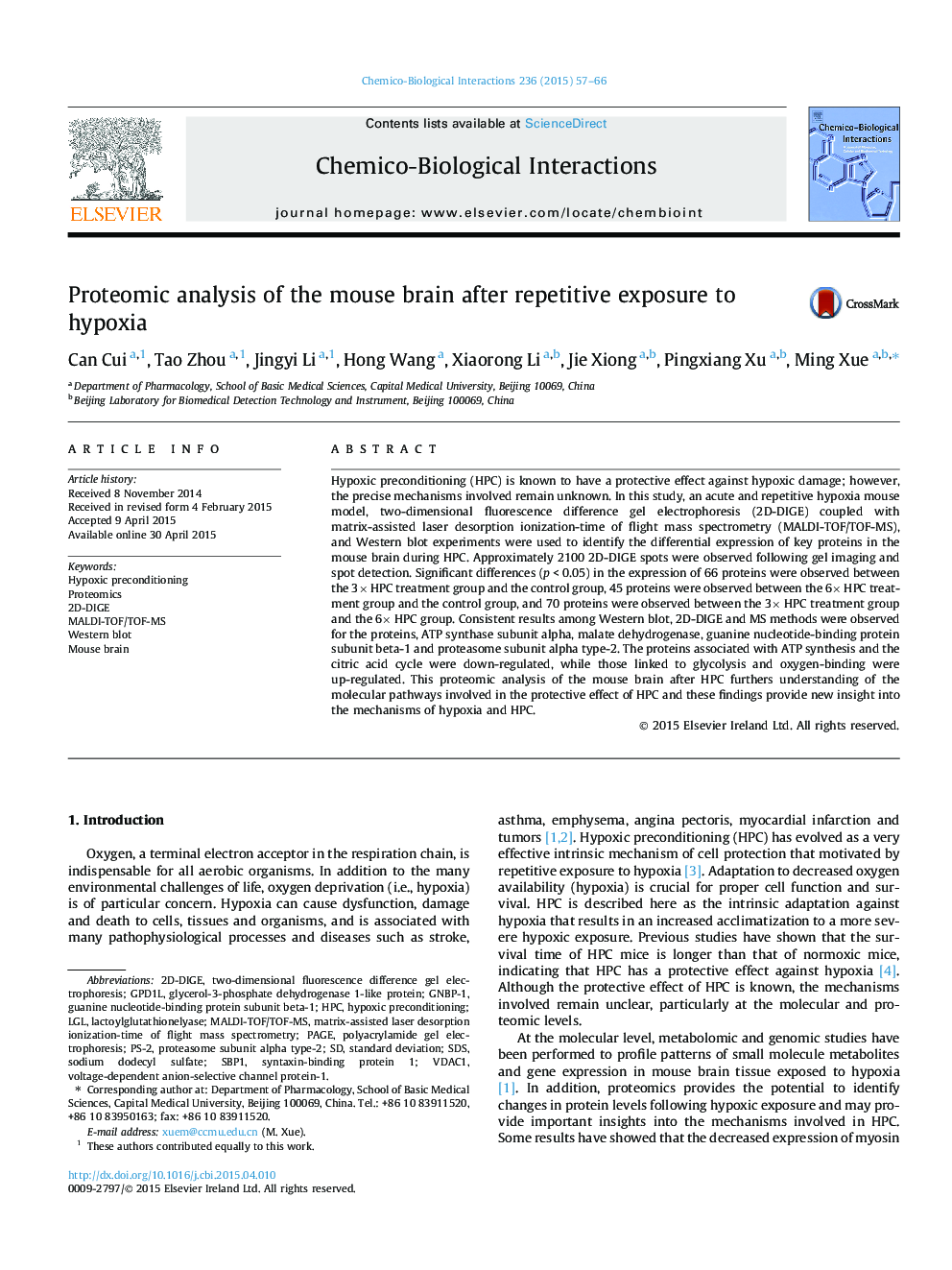| کد مقاله | کد نشریه | سال انتشار | مقاله انگلیسی | نسخه تمام متن |
|---|---|---|---|---|
| 2580179 | 1561605 | 2015 | 10 صفحه PDF | دانلود رایگان |
• Hypoxia preconditioning (HPC) is an intrinsic acclimatization to hypoxic exposure.
• 47 differentially expressed proteins were identified in HPC mice brain.
• Glycolytic enzymes were higher and mitochondrial proteins were lower in HPC.
• ATP synthase subunit alpha, malate dehydrogenase, GNBP1 and PS-2 were related to HPC.
• Results were confirmed by 2D-DIGE, MALDI-TOF/TOF-MS and Western blot.
Hypoxic preconditioning (HPC) is known to have a protective effect against hypoxic damage; however, the precise mechanisms involved remain unknown. In this study, an acute and repetitive hypoxia mouse model, two-dimensional fluorescence difference gel electrophoresis (2D-DIGE) coupled with matrix-assisted laser desorption ionization-time of flight mass spectrometry (MALDI-TOF/TOF-MS), and Western blot experiments were used to identify the differential expression of key proteins in the mouse brain during HPC. Approximately 2100 2D-DIGE spots were observed following gel imaging and spot detection. Significant differences (p < 0.05) in the expression of 66 proteins were observed between the 3× HPC treatment group and the control group, 45 proteins were observed between the 6× HPC treatment group and the control group, and 70 proteins were observed between the 3× HPC treatment group and the 6× HPC group. Consistent results among Western blot, 2D-DIGE and MS methods were observed for the proteins, ATP synthase subunit alpha, malate dehydrogenase, guanine nucleotide-binding protein subunit beta-1 and proteasome subunit alpha type-2. The proteins associated with ATP synthesis and the citric acid cycle were down-regulated, while those linked to glycolysis and oxygen-binding were up-regulated. This proteomic analysis of the mouse brain after HPC furthers understanding of the molecular pathways involved in the protective effect of HPC and these findings provide new insight into the mechanisms of hypoxia and HPC.
Figure optionsDownload as PowerPoint slide
Journal: Chemico-Biological Interactions - Volume 236, 5 July 2015, Pages 57–66
